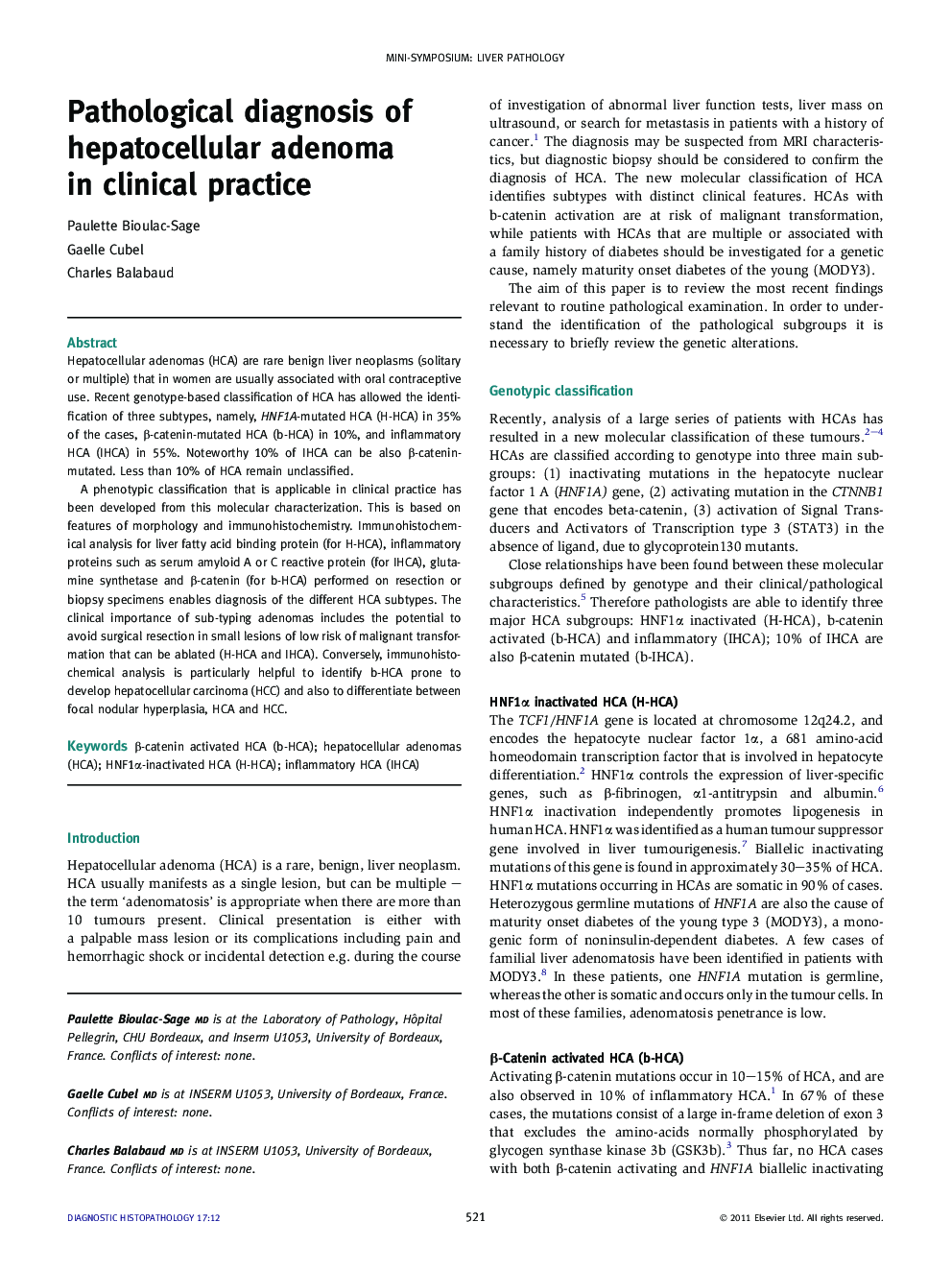| Article ID | Journal | Published Year | Pages | File Type |
|---|---|---|---|---|
| 4131446 | Diagnostic Histopathology | 2011 | 9 Pages |
Hepatocellular adenomas (HCA) are rare benign liver neoplasms (solitary or multiple) that in women are usually associated with oral contraceptive use. Recent genotype-based classification of HCA has allowed the identification of three subtypes, namely, HNF1A-mutated HCA (H-HCA) in 35% of the cases, β-catenin-mutated HCA (b-HCA) in 10%, and inflammatory HCA (IHCA) in 55%. Noteworthy 10% of IHCA can be also β-catenin-mutated. Less than 10% of HCA remain unclassified.A phenotypic classification that is applicable in clinical practice has been developed from this molecular characterization. This is based on features of morphology and immunohistochemistry. Immunohistochemical analysis for liver fatty acid binding protein (for H-HCA), inflammatory proteins such as serum amyloid A or C reactive protein (for IHCA), glutamine synthetase and β-catenin (for b-HCA) performed on resection or biopsy specimens enables diagnosis of the different HCA subtypes. The clinical importance of sub-typing adenomas includes the potential to avoid surgical resection in small lesions of low risk of malignant transformation that can be ablated (H-HCA and IHCA). Conversely, immunohistochemical analysis is particularly helpful to identify b-HCA prone to develop hepatocellular carcinoma (HCC) and also to differentiate between focal nodular hyperplasia, HCA and HCC.
